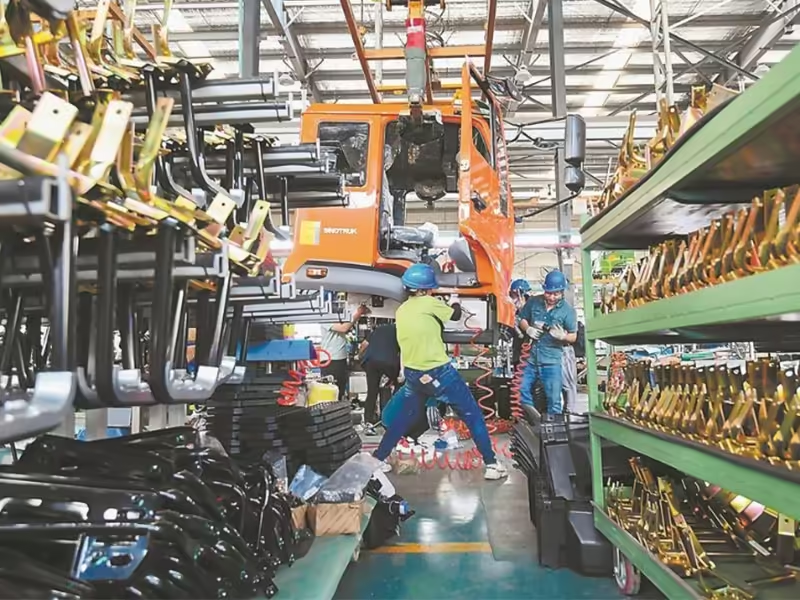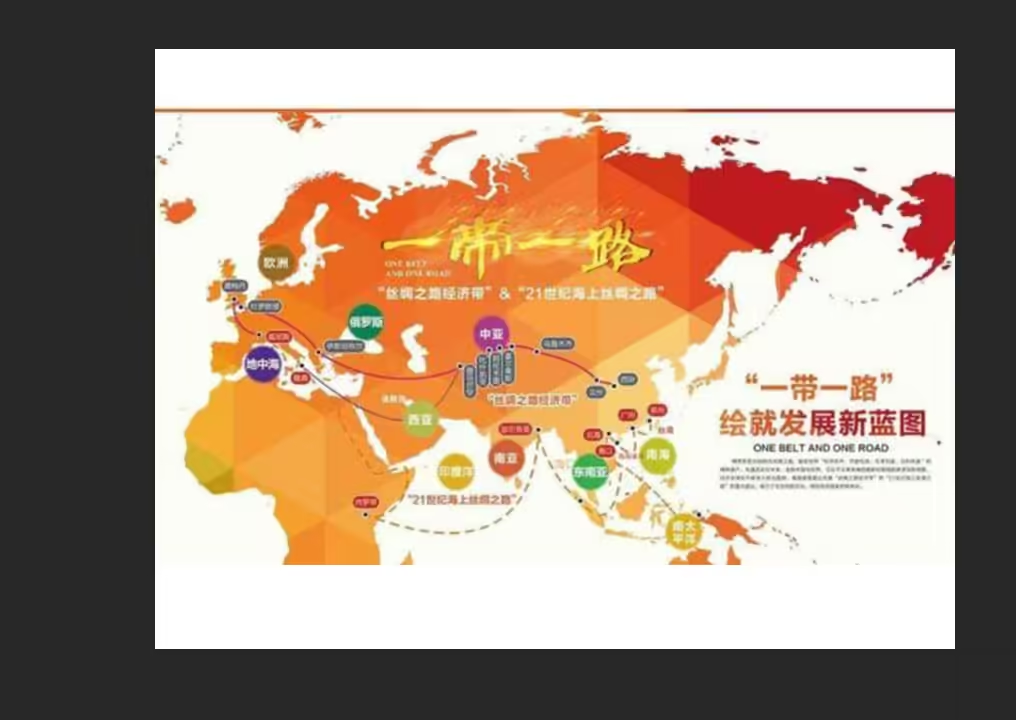
“In the first seven months of this year, sales of new energy heavy-duty trucks in my country have been extremely hot, with overall sales increasing year-on-year for consecutive consecutive years. The new energy heavy-duty truck market has entered a period of rapid growth.” said a heavy-duty truck industry insider.
At present, the heavy-duty truck industry is ushering in a wave of “electrification and unmanned operation”. Statistics show that from January to July 2024, my country’s heavy-duty truck market sold a total of 562,800 vehicles, a year-on-year increase of 2%; the new energy heavy-duty truck market sold a total of 34,300 vehicles, a year-on-year increase of 148%. This year, the new energy heavy-duty truck market surpassed the annual sales of 2021 in 3 months, surpassed the annual sales of 2022 in 6 months, and surpassed the annual sales of 2023 in 7 months.
On August 9, Liang Linhe, Chairman of Sany Heavy Truck, stated that Sany Heavy Truck has officially entered the era of electrification 3.0, and has also launched 5G unmanned electric heavy trucks and digital network systems to help downstream usage scenarios become “green and unmanned.”
New energy heavy truck market continues to be hot
The latest data from the First Commercial Vehicle Network shows that in July 2024, a total of 6,613 new energy heavy-duty trucks were sold in the domestic market (the data source is the actual sales of compulsory traffic insurance, excluding exports, etc.), a year-on-year increase of 179%. This is the 18th consecutive month that the new energy heavy-duty truck market has maintained year-on-year growth.
“Since the beginning of this year, the monthly sales of new energy heavy-duty trucks have exceeded 5,000 units for six times, especially in June and July, with monthly sales exceeding 6,000 units. This is the first time in history that sales have remained above 6,000 units for two consecutive months. It is no exaggeration to say that we are now in the heyday of the new energy heavy-duty truck industry.” The First Commercial Vehicle Network believes.
When FAW Jiefang was interviewed, it stated that the electrification of heavy-duty trucks benefited from national policy guidance on the one hand, and on the other hand, the economic benefits of electric heavy-duty trucks were already better than those of fuel vehicles in some scenarios.
“On the one hand, the market is paying more and more attention to carbon reduction, and the green transformation of the logistics industry is the general trend; on the other hand, new energy heavy-duty truck products are gradually maturing, and costs are further reduced. In some scenarios, the overall vehicle use cost of new energy heavy-duty trucks is close to or even lower than that of gasoline trucks. Multiple factors have jointly contributed to the rapid growth in sales of new energy heavy-duty trucks today.” Liu Li, deputy director of Sany Heavy Truck Product Research Institute, believes.
Beidou data shows that in the first seven months of this year, Sany’s new energy heavy-duty trucks sold 4,868 units, with a market share of 17.4%; Sany’s new energy tractor vehicles sold 2,885 units, with a market share of 16.3%.
In July, the sales of new energy heavy-duty trucks of mainstream enterprises were almost all higher than the same period last year, and 11 of the top 15 enterprises achieved double-digit sales. “With a high sales base last year, leading new energy heavy-duty truck enterprises such as Sany Heavy-Duty Truck still achieved good year-on-year growth this year, which is very valuable,” said a person in the new energy heavy-duty truck industry.
There is still much room for improvement in penetration rate
In Liu Li’s view, the penetration rate of new energy heavy-duty trucks is increasing, but there is still much room for improvement.
Data shows that in July this year, new energy heavy-duty trucks accounted for 14.2% of the terminal sales of the heavy-duty truck market. This is the third time this year that the penetration rate of new energy heavy-duty trucks has exceeded 10%.
According to data from the First Commercial Vehicle Network, the technical route of new energy heavy-duty trucks in 2023 will be mainly pure electric (including battery-swap pure electric), accounting for 88.75% of the whole year. After entering 2024, this feature of pure electric as the main technical route continues. In the first 7 months, fuel cell heavy-duty trucks and hybrid heavy-duty trucks accounted for only 6.36% of the new energy heavy-duty truck market, and the remaining 93.64% were all pure electric models.
At present, new energy heavy-duty trucks are being put into use in more and more places. From January to July this year, 12 provinces in China registered more than 1,000 new energy heavy-duty trucks, Hebei Province registered more than 5,000, and Shanxi, Guangdong, Sichuan, Hunan and Jiangsu provinces registered more than 2,000. After July, 19 provinces including Guangdong, Shanxi, Shaanxi, Fujian, Xinjiang, Hunan, Tianjin, Yunnan, Guangxi and Ningxia have registered more new energy heavy-duty trucks than last year.
In the investor relations activity record sheet on June 18, Sinotruk stated that in recent years, the sales volume and penetration rate of new energy heavy-duty trucks have increased rapidly. The company relies on Sinotruk New Energy Company to achieve the sales of new energy heavy-duty truck products, and the penetration rate has steadily increased. Data from June this year showed that the company’s cumulative sales of new energy heavy-duty trucks this year have exceeded the total sales of new energy heavy-duty trucks last year. In the future, the company will continue to optimize its products, expand its product advantages, and increase its market share.
Ouyang Minggao, an academician of the Chinese Academy of Sciences and a professor at Tsinghua University, said at the China Commercial Vehicle Forum that the market penetration rate of new energy heavy trucks will be only 2% in 2022, and it is initially estimated that it will be close to 50% by 2030.
Heavy truck industry ushered in the “electrification and unmanned” boom
At a press conference on August 9, Liang Linhe said that Sany Heavy Truck has officially entered the era of electrification 3.0, breaking the limitations of traditional buyer-seller relationships and launching a new energy full-ecological solution that integrates vehicles, scenarios, transportation capacity, energy replenishment and operations, coordinating the deep integration of industries, helping the development of large logistics companies, and empowering partners and industrial chains in the entire ecological chain. At the same time, Sany Heavy Truck also launched 5G unmanned electric heavy trucks and digital intelligent network systems.
According to reports, the intelligent driving level of Sany heavy trucks has reached L4, achieving a 20,000-kilometer road test of autonomous driving without human intervention. This year, the project also undertook the mission of testing the country’s first L4-level new energy autonomous driving commercial vehicle on the road in Ordos, helping this 8-kilometer transportation trunk line become a demonstration route for vehicle-road-cloud collaborative intelligent networked commercial vehicles.
“30 actual vehicles have undergone 200,000 kilometers of actual verification. This vehicle has gone from concept to reality, from prototype to commercial product,” said a person related to Sany Heavy Truck.
Sany’s new energy heavy-duty truck digital network system builds a management platform covering “vehicles, cargo, and people”, which can help companies set up electronic fences, easily realize fleet management, driver management, and vehicle monitoring, greatly improve management efficiency, and enable fleet management to transform from extensive management to intelligent management.
“At present, many downstream scenarios have achieved true ‘less-managed or unmanned’ management through intelligent systems. A logistics company in Xinjiang has achieved the result of a team of 15 people managing 200 vehicles and drivers, greatly improving the level of greenness and intelligence.” said an industry insider of new energy heavy trucks.



